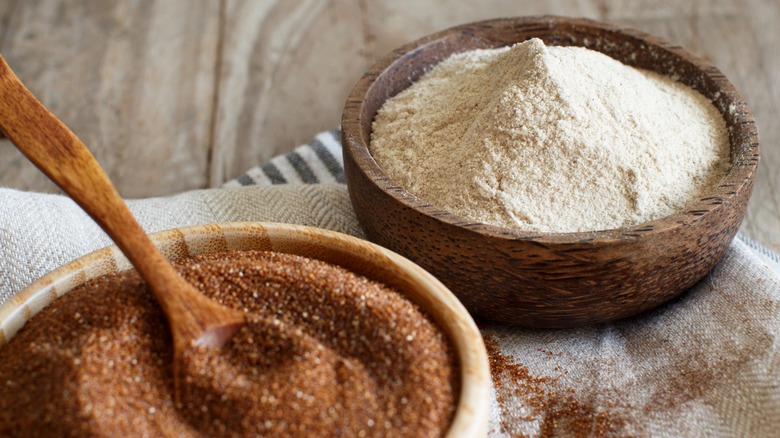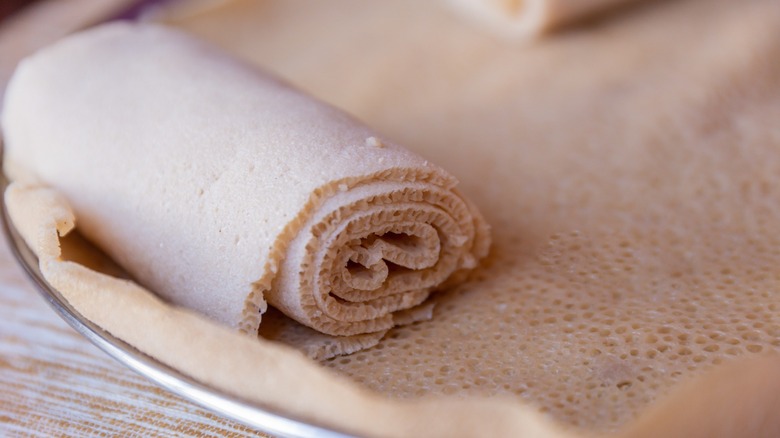The Ratio For Substituting White And Teff Flour
Teff flour is gaining popularity as a nutritious, flavorful, and versatile gluten-free alternative to traditional white flour. It's packed with protein, fiber, and essential minerals like iron and calcium, making it a healthful addition to your dishes. Derived from the ancient grain teff that originated in Ethiopia, this flour is now making its mark in kitchens around the world.
When substituting teff flour for white flour in recipes, you should aim to strike a balance between enhancing flavor and nutrition and maintaining the desired texture of your baked goods. The recommended ratio for this substitution is 25% teff flour to 75% white flour. This means for every cup of white flour your recipe calls for, you would use ¾ cup of white flour and ¼ cup of teff flour.
Why this specific ratio? The reason is primarily based on the fact that teff flour, being gluten-free, behaves differently than white flour. Gluten, a protein found in wheat, is what gives dough its elasticity and helps it rise. Since teff flour lacks this unique protein, using it exclusively can result in baked goods that are dense and less structured. By limiting the substitution to 25%, the recipe benefits from the nutritional richness and nutty flavor of teff while retaining the structural properties provided by the gluten in white flour. This balance ensures the final product doesn't stray too far from the texture and consistency that we're used to with traditional white flour recipes.
Going 100% gluten-free with teff flour
For individuals with gluten intolerance or celiac disease who require a completely gluten-free diet, teff flour needs to be used as a 100% substitute for white flour. Keep in mind, though, that using teff flour exclusively is best for recipes where the structure provided by gluten is not critical. For instance, recipes for pancakes, cookies, brownies, and certain types of cakes can successfully use teff flour without any white flour. Ethiopian injera, a type of sourdough flatbread traditionally made using 100% teff flour, is a classic example of this flour's versatility, yielding a soft, spongy pancake-like bread that's perfect for scooping up stews and salads.
Since teff doesn't provide the same elasticity as gluten-containing flours, your usual white flour-based baked goods will end up having a different mouthfeel. This is not necessarily a downside; many appreciate the heartier texture and rich flavor. However, in some recipes, you can mix the teff flour with other gluten-free flours like almond and buckwheat to achieve a more desirable texture. In any case, this blending of flours is common in gluten-free baking, where the combination of different flours often yields a better end product than a single flour on its own. Ultimately, using teff flour, whether in part or in whole, is a step towards more health-conscious and inclusive cooking.

